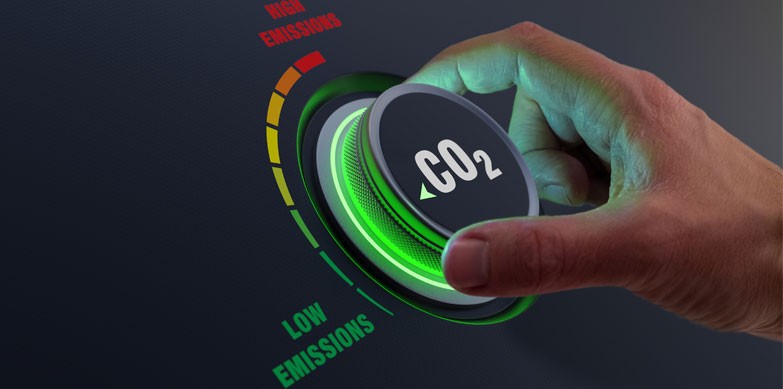ESRAG INITIATIVE
Every Club Climate Friendly
Together, let’s turn down the heat.
Become a climate friendly and carbon neutral club now.

EVERY CLUB
Why become climate friendly?
As pollution levels rise and the world becomes warmer, storms and droughts become stronger, harming the people that we, Rotarians, work hardest to help.
PRIORITY 1: INCREASE ROTARY’S GLOBAL IMPACT by taking actions to mitigate climate change in your club.
PRIORITY 2: EXPAND OUR REACH to those who are ready to act on climate change. Imagine the new partnerships in your community.
PRIORITY 3: ENGAGE THROUGH CARBON EMISSION REDUCTIONS & NATURE BASED SOLUTIONS such as mangrove restoration, tree planting and sustainable agriculture.
PRIORITY 4: ADAPT BY ALIGNING OUR INVESTMENTS with the environment area of focus in order to save future generations.
EVERY CLUB CLIMATE FRIENDLY
HOW IT WORKS
Your club can lead the charge to positive change! How? It’s like any team sport where the goal is to get the LOWEST score. With practice, good coaches, and everyone’s commitment, your club will get to zero and some even go below zero!
Step One: Estimate your greenhouse emissions
Identify your club’s C.E.O., Club Environment Officer. This person or small team works with your club’s committees and members to estimate your carbon footprint and find a way to reach zero. Invite your Interact, Rotaract, or other local groups to help.
Estimate your club’s GHG emissions baseline. Keep it simple at first. A typical club emits 10 to 15 tons of CO2 equivalent per year.
You can calculate your club’s carbon footprint by using either of these methods:

Club Carbon Estimator
Calculate your club’s carbon footprint, prepared by BecomeSustainable.org in Europe.

Club Carbon Estimator
Calculate your club’s carbon footprint, prepared by the Oceania region.

Flight Carbon Estimator
Compensate for your flight carbon by donating to The Rotary Foundation’s Environment Fund.
Step Two: Your club’s low carbon activities
Identify and celebrate your club’s low carbon activities:
- Avoid single use items.
- Share or compost left-over food.
- Source your meal ingredients locally.
- Offer vegetarian meals with smaller serving utensils.
- Offer ride-sharing.
- Reduce travel by encouraging virtual alternatives.
- Select projects that help care for the environment and mitigate climate change.
- Share your good work with others in your community.
- Lead or participate in projects that sequester carbon like planting/maintaining trees, re-vitalising marshes, mangroves, etc.
- Lead or participate in projects that support renewable energy.
- Help your community to improve building standards.
- Initiate and support the circular economy.
- When travel is necessary, compensate for the carbon consequences with ESRAG’s Flight Carbon Estimator.
Step Three: Your club’s high carbon activities
Identify and modify your club’s high carbon activities:
- Offering more plant rich foods at club meetings is an easy way to lower blood pressure, and cholesterol as well as your club’s GHG emissions. See ESRAG’s Plant-Rich Diet recipe book.
- Work with meal providers to reduce food waste, saving money and carbon. If food waste were its own country, it would be the 3rd largest emitter of GHG behind China and the US. See ESRAG’s Food Waste Task Force for ideas.
- ESRAG’s Plastic Solutions Taskforce has ways to reduce single use items at meetings.
- Offer hybrid meetings, hybrid conferences, and hybrid international events to reduce unnecessary travel.
-
Hold meetings in virtual rooms like ESRAG EXPO. Here’s a tutorial.
Step Four: Can’t reach Zero? Compensate.
Still can’t get to zero? Compensate using these climate funds or activities:
Of course, every event requires some GHG. Consider donating to the Climate Fund, Rotary projects, and ESRAG initiatives that support the reduction of GHG.
- The Climate Fund, initiated by members of ESRAG D&CH, your club’s donations will be used towards projects that sequester carbon or lower greenhouse gas emissions. Please contact Dr. Ludwig Kalthoff for more information.
- Flight Carbon Estimator: Does air travel contribute to your club’s carbon footprint? Compensate for the carbon consequences of your travel through Rotary’s Flight Carbon Estimator. Your donation to ESRAG’s Carbon Compensation Fund goes to The Rotary Foundation’s Environment Fund to support Global Grants to protect the environment.
- Solar Safe Water: when your club donates 131 EUR to purchase a Solvatten unit for a family, your club offsets 7 tons of CO2.
- More ideas are forthcoming
Step Five: Make a plan
Work with your Club Environment Officer, C.E.O., to make a five year plan.
Using one of the club carbon calculators, determine how you can cut emissions over the next five years. Set realistic goals. At regular intervals, measure progress, celebrate successes, adjust and repeat. Record and share your progress.
Tell your story with a “Journey to Zero” graph or “Club Climate Scorecard” and share it on your website, newsletter, and/or club meetings.
Together we can reduce our carbon to net-zero… and lower! GAME ON!
Take action
Interested in making your club climate-friendly? Contact us to calculate your club’s carbon footprint.

